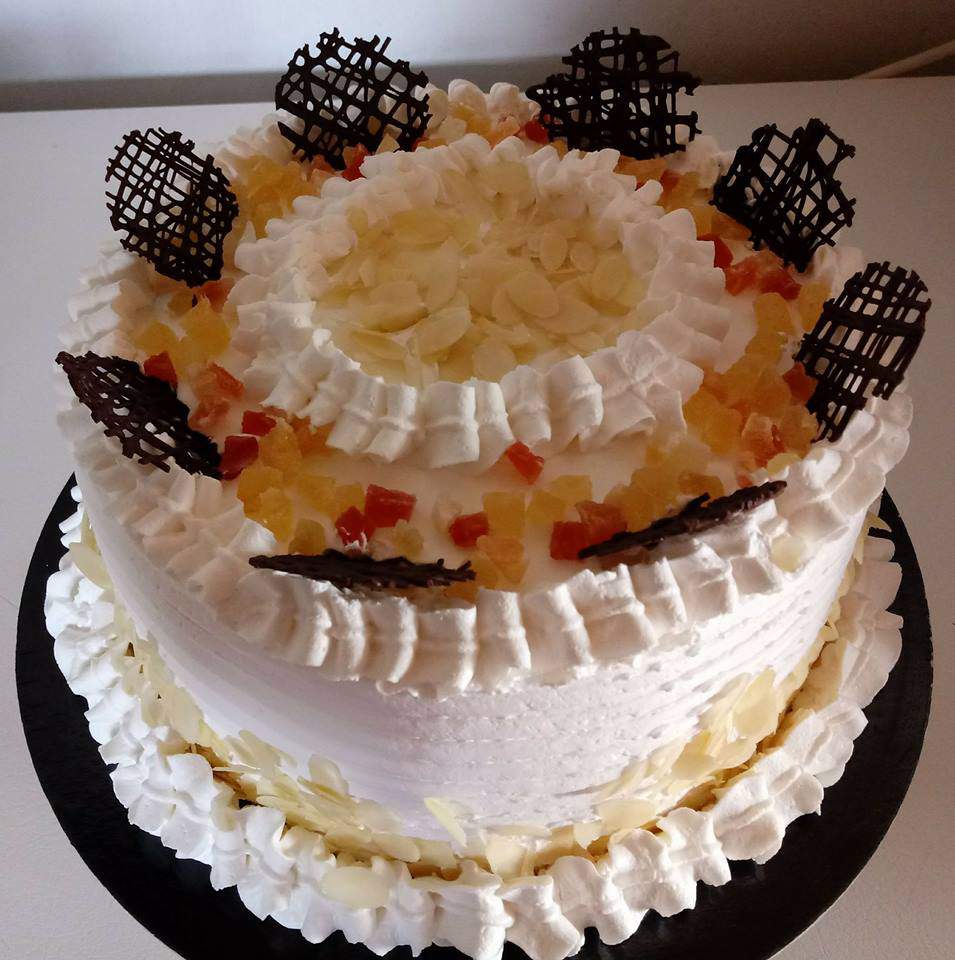Recipe of the week: Russian cream cake

Another popular Hungarian dessert is the Russian cream cake. The name is misleading, though – the origins of the cake are not known, there’s some mystery surrounding the cake.
History of the cake
Many believe that the recipe was created between the two world wars, by a Hungarian confectioner called Sándor Oroszi. The last letter of his name slowly got chipped as the recipe spread, and that’s why Hungarians know it today as a Russian cream cake, even though we are relatively confident that it has nothing to do with Russia. It is true, though, that it’s very similar to the French Mille-feuille recipe, except that that is made from puff-pastry and not a sponge.

Not to mention the fact that the rather simple base of the recipe – cream and sponge – was popular in the 17th century already.
Layered cakes with crème anglaise and fancy decorations were very popular among aristocrats, up until the 19th century. That explains why the 1885 invention, Dobos cake, was welcomed as such a modern, refreshing invention. So, this type of cake has been around for some time, but it is possible that Oroszi was the first to have alternating layers of sponge and cream.
Either way, it is a delicious cake, and it is definitely worth trying out!
Recipe
Ingredients for the sponge:
7 eggs
7 tbsp sugar
7 tbsp flour
Stir together the egg yolks and a third of the sugar. Beat the egg whites and the rest of the sugar until stiff. Gently fold the two together, adding the flour as well. Put it into a lined baking tin and bake until 30-40 minutes on 180C oven temperature.
Ingredients for the cream:
300 ml milk
5 egg yolks
200 g sugar
1/2 vanilla stick
15 g gelatine
400 ml cream
grated lemon zest
100 g raisins
100 g candied peel
150 ml rum
Prepare a thick vanilla custard using the milk, the egg yolks, the sugar, the vanilla and the lemon zest. Add the soaked gelatine while the custard is still warm, then let it cool. Beat the cream until stiff and then gently fold in with the rest.
Soak the raisins and the candied peel in the rum. Put the first layer of the sponge into a lined tin. Drizzle it with rum, add a layer of cream and some raisins and candied peel, then get another layer of sponge. Repeat this until the ingredients are used up, but make sure a layer of cream is at the top! Cover the cake and put it in the fridge for a few hours to set.
Ingredients for the decoration:
2 dl cream
1 tsp gelatine
ground nuts
Stir together the soaked gelatine and the cream. Spread some of it onto the side of the cake so that the ground nuts stick better. Use the rest of the cream to decorate the cake by piping. You can put some colourful fruit, candied peel or chocolate on top as well.
The only thing left to do is enjoy!
If you want to find the best Hungarian desserts, check out this list of the 5 best confectioneries in Budapest.
Source: origo.hu, maimoni.cafeblog.hu, kismandula.hu, noklapja.nlcafe.hu





